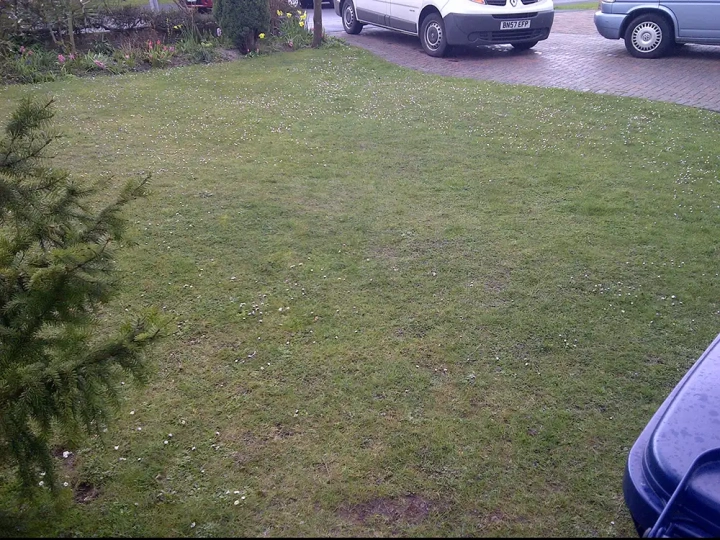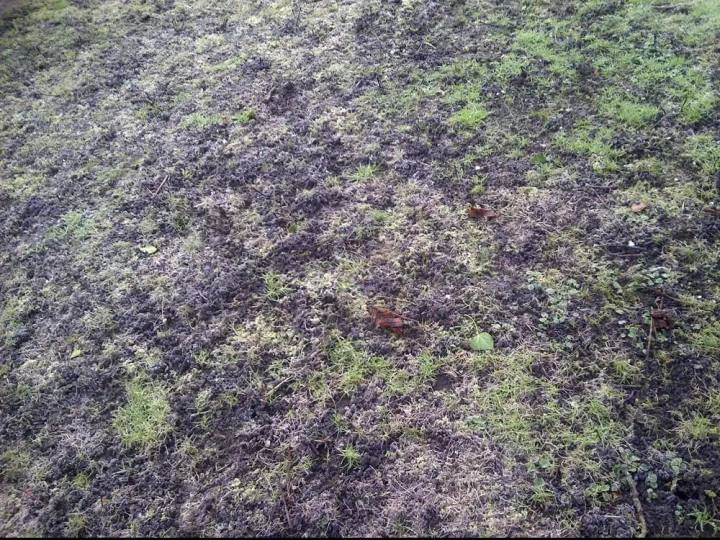Can We Help?
Generally, if there is an existing population of grass that is dense enough to mount a viable recovery once weeds and Moss are under control, improvements will be seen rapidly. Sometimes regular treatments from the essentials plan will need to be augmented with items from the 'optional extras' list before the lawn reaches its full potential. But in most cases, improvements are notable and worthwhile within a month.


Above are two lawns with weak grass, lots of weeds and substantial areas of moss: But the outlook for these lawns to make rapid improvements is good. There is ample grass density for confidence.
Almost all lawns start to improve well once enrolled on our 'regular essentials' treatment plan. It is common for customers to be amazed at how their lawns improve. But if you have doubts about the potential your lawn, please send us a couple of photos to info@grasshopperlawncare.co.uk
Weed reduction will start to be visible within 2-3 weeks, but modern weed control products work slowly, and some weed types take longer than this to rot away and disappear completely.
Grass Condition is normally improving within 2 weeks of fertiliser application, but soil type and condition as well as the weather can make this a longer process.
Moss is less easy to generalise about because there are so many potential influences that can encourage its growth on a lawn.
Problem Lawns
Problem lawns / that will not improve usefully with the 'regular essentials' treatment plan will all have a population of lawn grasses which is too sparse to be viable in recovering sufficiently to become a lawn again.

Example of a lawn in need of significant repair.
Too sparse and worn to respond well to regular treatments alone.

Another lawn surface – unlikely to respond sufficiently with regular treatments.
Extended winter waterlogging has led the roots of many lawn grasses to rot. Significant repairs and re seeding will be needed once the drainage issues are addressed. Grasshopper does not do drainage related groundworks.

In this case, years of neglect and uncontrolled moss growth Has choked back grass, leaving a population of grass too weak And thin to be sufficiently revived into a lawn. A very big Restoration or complete returfing is now needed.




